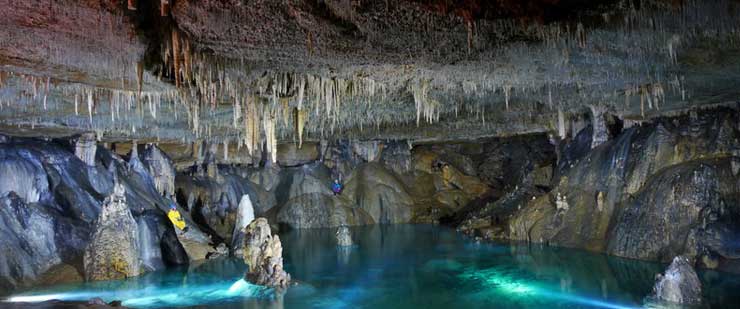



| Buxton Online You are not logged in [superman] [172.31.0.197] [Ecreator 8.dev] |     |

There aren't actually many caves in Buxton but there is a major system which cavers have yet to enter, connecting the sinks on Stanley Moor with the rising in the Wye Valley. Pooles Cavern forms part of the abandoned section of the cave system, a spectacular showcase cave which is open to visitors.
Poole's Cavern, or Poole's Hole, is a 2 million year old natural limestone cave on the edge of Buxton and has been designated a site of special scientific interest. The name comes from an outlaw, Poole, who reputedly used the cave as a lair to rob travellers in the 15th century. In 1981 and 1983, archaeological explorations suggest the cave was occupied from the Bronze Age and some of the finds have been interpreted into suggesting one of the chambers was used for religious purposes by Romano Britons or perhaps that the cave was a metalworker's workshop.
It was officially opened to the public as a show cave in 1853 by the sixth Duke of Devonshire and the cave was already a tourist attraction, being listed as one of the Wonders Of The Peak by Charles Cotton in 1683. It is claimed that Mary Queen of Scots was an early visitor and under the management of the Dukes overseer, Frank Redfern, the entrance was widened, and in 1859 a system of gas lamps was installed to light the cavern, one of the earliest uses of gas in this context, which remained in use until the cave was closed in 1965.
Nowadays it is possible to travel deep beneath the earth with expert guides and explore the vast limestone caverns to see how crystal stalactites have lined the chambers over billions of years. The incredible underground world is now lit up with new LED lighting. Work in the last few years has shown there is a passage somewhere beyond a massive boulder choke, or rock pile, at the current end of the cave. The region which is currently open to the public is around 310 m in length and includes chambers called the Roman Chamber, Great Dome, Poached Egg Chamber and Sculpture Chamber. Features include large stalactites and stalagmites called the ' Flitch of bacon' and Mary Queen of Scots pillar,' as well as stalagmites, which have a very porous texture and poached egg colour, which come from the minerals leached from the lime burning on Grin Low above.
Cavern tours are accompanied with a guide at all times, and tours begin every 20 min and leave from the visitor centre, exhibition area. The cavern tour is approximately 15 min underground and there are 28 steps in the cavern with no more than 10 in one place, so pushchairs and child buggies are permitted in the cave. The temperature underground is a constant 7°C, 44°F and there are just two low points. One is located at the entrance one is situated by the first set of steps but they are clearly marked with 'mind your head' signs.
Plunge Hole on Stanley Moor is typical of the rather meagre caves in this area which cavers probably don't even give more than a day for a visit. However, if you would like to understand the drainage of Buxton, Stanley Moor is a good place to start.
Wye Head Resurgence is in the middle of a residential part of Buxton, and is the source of most of the water in the River Wye which flows through the town and on down to Matlock.